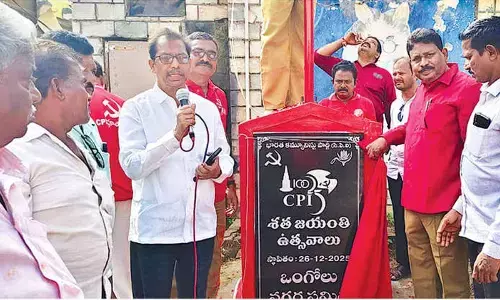In India’s district courts, a crisis is revealed

There is one judge for every 73,000 people in India, seven times worse than the United States. On an average, 1,350 cases are pending with each judge, who clears 43 cases per month.
Justice delayed...
- Over 20 million cases pending in Indian districts courts. Two-thirds are criminal cases. One in 10 pending for more than 10 years
- One judge for every 73,000 people in India; on an average, 1,350 cases are pending with each judge
- Among the states clearing the case backlog, the southern states of Karnataka, Kerala, Andhra Pradesh, Telangana and Tamil Nadu are the best. They will clear all pending cases within six years
As of today, there are more than 20 million cases pending in the Indian districts courts; two-thirds are criminal cases and one in 10 have been pending for more than 10 years, our analysis of National Judicial Data Grid (NJDG1) data has revealed. More revelations:
There is one judge for every 73,000 people in India, seven times worse than the United States. On an average, 1,350 cases are pending with each judge, who clears 43 cases per month. At the rate cases are handled at the district courts, civil cases will never get cleared, and it will take more than 30 years to clear criminal cases. This is a looming crisis, and understanding where the problem lies is key to finding a solution.
Delhi has India’s worst people-to-judge ratio, other small states twice better than national average. While the national average is 73,000 people to a judge, Delhi is almost seven times worse with about 500,000 people to a judge. At the other end, smaller states and union territories (UTs) such as Chandigarh, Goa, Andaman and Nicobar Islands, Sikkim, Haryana and Himachal Pradesh have at least twice as many judges per person, compared to the national average.
Let us next look at the case burden on judges in each state. As expected, smaller states which have a better population-per-judge ratio perform better and the bigger states are worse off. Uttar Pradesh (UP) stands out as the state with the maximum case burden on each judge, with about 2,500 cases pending per judge. That is almost twice the national average of 1,350 cases per judge. Sikkim and Mizoram are the best performing states with 71 and 118 pending cases per judge respectively.
States with fewer judges and higher burdens have most cases pending for more than a decade. Does the burden on judges translate to judicial delays? We have mixed results. Smaller states and UTs such as Haryana, Sikkim, Chandigarh, Punjab, Mizoram and Himachal Pradesh have less than 1% of cases pending more than 10 years. Among states with the worst ratio, Gujarat heads the list with about one in 4 cases delayed more than 10 years.
There is a correlation between the case burden on judges and population per judge. Uttar Pradesh, Orissa, Bihar and West Bengal, which have a higher burden and higher population per judge, also have a higher ratio of cases pending more than 10 years. Maharashtra builds a backlog of 100,000 cases every month; UP clears 44,500 per month Next let us look at the rate at which states are able to dispose the cases each month. This is the number of cases disposed minus the cases filed in that month.
A positive number implies than more cases are disposed than filed each month. This will result in eventual clearance of pending cases. A negative number means that the state is adding to its pending cases each month. Maharashtra and Uttar Pradesh stand out at either extreme. Maharashtra builds a backlog of more than 1,00,000 cases each month, while UP clears more than 44,500 pending cases each month. Karnataka clears about 34,000 pending cases each month.
UP, which has 2,513 pending cases per judge and a total of 631,290 cases pending for more than 10 years, is clearing 44,571 cases each month, five times faster than the national average. Gujarat and Bihar, which have a high ratio of cases pending for more than 10 years, continue to pile on more cases each month.
Why some states will never be able to clear pending cases (at current disposal rates). States that build a backlog will never be able to clear their pending cases at the current rate of clearance. The 10 states with the fastest-growing backlog: Maharashtra, Gujarat, Bihar, Delhi, Goa, Himachal Pradesh, Chandigarh, Meghalaya, Sikkim and Orissa.
Among the states clearing the case backlog, the southern states of Karnataka, Kerala, Andhra Pradesh, Telangana and Tamil Nadu are the best. They will clear all pending cases within six years. UP, which has the highest number of pending cases per judge, will also clear pending cases within 10 years due to its high case-disposal rate.
Two pending criminal cases for each civil case: The NJDG allows us to see the criminal and civil cases pending in each state. This helps us understand the rate at which justice is delivered to criminal cases relative to civil cases. The national average is two pending criminal cases for each pending civil case. Bihar, Uttarakhand and Jharkhand have almost five times as many pending criminal cases to civil cases. At the other extreme, Tamil Nadu, Andhra Pradesh, Manipur, Himachal Pradesh, Karnataka and Punjab have a very low ratio…
It is well known that India’s judicial infrastructure is crippled. This analysis helps us understand where the problems lie. Our analysis reveals where to invest on judicial infrastructure, fill vacancies for judges and provides the evidence needed for urgent reforms and target the reforms at the right areas. (Courtesy: http://www.indiaspend.com; Mathur is the Executive Director, Vision India Foundation, and Bolia is an associate professor at IIT Delhi)




















